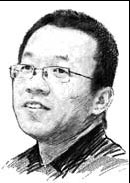Wenchuan Quake
Recording history
(China Daily)
Updated: 2011-06-01 08:31
 |
Large Medium Small |
BYLINE | HUANG XIANGYANG

May 12, 2008 is a day painful to remember but impossible to forget.
On that day, the strongest earthquake to hit China in three decades jolted Wenchuan in Sichuan, killing more than 87,000 people, the highest toll for any single natural disaster in China with the exception of the 1976 Tangshan earthquake, in which 240,000 people perished.
Three years have passed, but the memory of the days and nights when I, as a front page night editor, together with my colleagues, followed, covered and reacted to every moment following "the day the earth moved", is as fresh as when the calamity first struck.
It was at 2:30 pm when I felt the jolt at home in Beijing, where I was surfing the Internet. I had first thought that the sense of vertigo was caused by long hours spent on the computer. But then I realized it was an earthquake, though still unaware of the full scale of its impact.
It was not long before details trickled in on TV and the Internet. As I got the words "7.8-magnitude" (later raised to 8) - I knew it would be our main story.
The first news came from areas other than the worst-hit regions around the epicenter at Wenchuan. The partial information blackout from the very heart of the disaster - cut off from the outside world with telecom services down and roads blocked - filled my mind with unease, worry and an ominous feeling.
My colleagues wasted no time. When we started the editorial meeting at 5 pm, two of our reporters were already on their way to Sichuan. More were to be sent later. But before they could send stories and pictures back from the frontline, we had to rely on wire services, TV and the Internet to fill the pages reserved for the coverage. It was the biggest domestic news during my 14 years on the night shift. I was desperate to get it right.
News came at first in snippets, covering casualties and damage, with the figures fast increasing. I suggested using a huge infographic to specify casualties and locations together with the lead picture, all set against a black background. The page designer and the copy editor agreed.
I left the office at about 2 am, saddened by the updated death toll that had already surpassed 8,500. In the days that followed, the nation was plunged into deep grief with fast rising tolls but was also moved as people in quake-hit areas displayed unrivaled courage and resilience.
Our newspaper, while covering the evolving events, had many of its firsts: For the first time, we combined the front and back pages to make page 1 on May 14. For the first time, we used only a picture, without any text, on the May 20 front page. It showed the national flag flying at half-mast at Tian'anmen Square, when China came to a three-minute standstill in its first ever national mourning for the deaths of its citizens. The sorrow was beyond words.
Throughout those days, my heart was heavy and tears welled up in my eyes. But I am proud that I was among those who recorded the terrible events of that period, and I did my job to the utmost of my ability.
Huang Xiangyang is night editor with China Daily.
(China Daily 06/01/2011 page65)